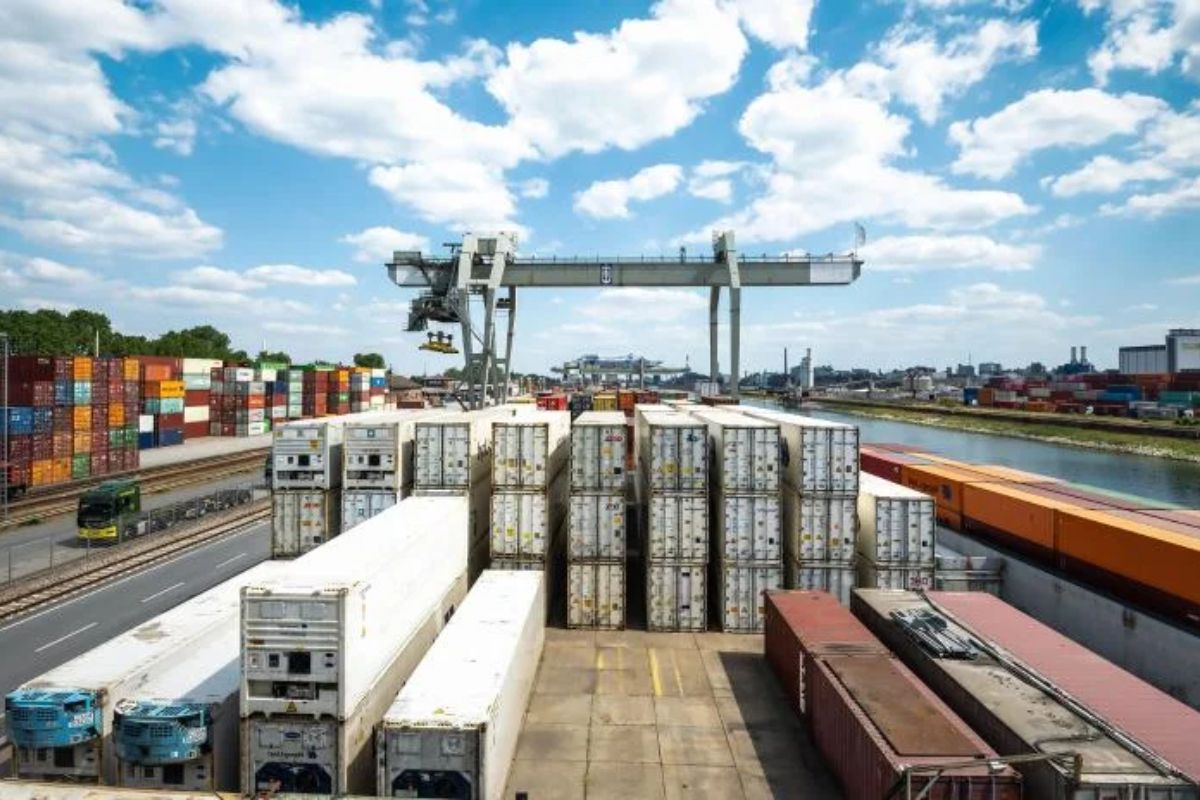Central Europe’s Recovery: As Germany, the economic powerhouse of Europe, continues to grapple with its own set of challenges, the spotlight is now shifting towards Central Europe’s ability to navigate these troubled waters and emerge stronger.
With a heavy reliance on exports and close economic ties to Germany, countries such as Poland, Hungary, and the Czech Republic have found themselves at the forefront of this economic turbulence. However, amidst the uncertainty and volatility, Central Europe is quietly working towards its recovery, driven by a sense of resilience and adaptability.
In this discussion, we will delve into the challenges faced by these export-dependent nations, the economic impact of Germany’s downturn, the efforts undertaken to adapt to the changing circumstances, and the concerns and uncertainties that lie ahead.
Brace yourself for an exploration of Central Europe’s economic journey and its determination to overcome the obstacles it faces.
Key Takeaways
- Central Europe’s export-dependent nations are significantly impacted by Germany’s economic downturn, particularly due to their reliance on Germany’s automotive sector.
- The COVID-19 pandemic has worsened the situation, leading to job losses, decreased investments, and slower economic growth in Central Europe.
- To adapt to these challenges, countries in Central Europe are diversifying their product offerings, investing in innovation and technology, collaborating with other companies, and expanding into new geographical regions.
- Central European companies are exploring alternative markets and industries, such as Asia’s growing demand for battery and electric car manufacturing, to mitigate the impact of Germany’s weakened demand in traditional Western European markets.
Challenges Facing Central Europe’s Export-Dependent Nations
Central Europe’s export-dependent nations are grappling with formidable challenges amidst Germany’s economic struggles. The reliance on Germany’s robust automotive sector has left countries like Hungary, Czech Republic, and Slovakia vulnerable to the repercussions of Germany’s downturn.
Also Read: Germany’s Economic Challenge: BDI Forecasts Minimal Growth for 2024
These nations are now facing a dire situation as they try to recover from the devastation caused by the COVID-19 pandemic. The export-oriented economies of Central Europe are heavily dependent on Germany as their main trading partner, making them susceptible to any fluctuations in Germany’s economic performance.
With Germany’s automotive industry experiencing a decline, the demand for exports from these countries has plummeted, leading to a severe blow to their economies. This has resulted in job losses, decreased investments, and a slowdown in economic growth.
Central Europe’s export-dependent nations are now left to grapple with these significant challenges as they strive to find alternative solutions and diversify their economies to mitigate the impact of Germany’s economic struggles.
Economic Impact of Germany’s Downturn on Central Europe
The economic struggles of Germany have reverberated throughout Central Europe, leaving countries heavily reliant on German exports grappling with the profound implications of this downturn. As Germany’s economy slows down, the impact on its neighboring countries cannot be underestimated. The table below provides a visual representation of the economic impact of Germany’s downturn on Central Europe:
| Country | Export Dependency on Germany | Implications |
|---|---|---|
| Hungary | High | Decreased demand for Hungarian goods and services |
| Czech Republic | High | Reduction in exports and job losses |
| Slovakia | High | Negative impact on manufacturing sector |
These countries have built their economies around the success of German exports, and now they find themselves vulnerable to the slowdown. With decreased demand for their goods and services and a reduction in exports, these nations are facing significant challenges. The economic interdependence between Germany and Central Europe has become a double-edged sword, and as Germany struggles, so do its neighboring countries.
Adaptation Efforts Amidst Economic Challenges
Amidst the economic challenges brought about by Germany’s downturn, companies in Central Europe are strategically adapting to the changing landscape. With the decline in demand for Hungarian manufacturer DGA Gepgyarto es Automatizalasi Kft, the company has smartly shifted its focus towards the defense industry. This move not only showcases their ability to adapt but also highlights the resilience of Central European companies in the face of adversity.
But DGA Gepgyarto es Automatizalasi Kft is not alone in its efforts. Other companies in the region are also making bold moves to survive and thrive in these challenging times. Here are five adaptation efforts being seen across Central Europe:
- Diversification of product offerings to target new markets
- Investment in innovation and technology to improve efficiency and competitiveness
- Collaboration with other companies to share resources and reduce costs
- Expansion into new geographical regions to tap into emerging markets
- Focus on sustainability and environmentally-friendly practices to meet changing consumer demands
These adaptation efforts demonstrate the determination and forward-thinking approach of Central European companies as they navigate through the economic challenges brought about by Germany’s struggles.
Exploring Alternative Markets and Industries
With the decline of demand in traditional Western European markets, Central European companies are now exploring alternative markets and industries to sustain their growth amidst Germany’s economic struggles.
One of the emerging markets that has caught their attention is Asia. Hungary, in particular, has positioned itself as an attractive destination for investments in battery and electric car manufacturing, managing to attract significant investments from China. This move not only diversifies their customer base but also taps into the growing demand for electric vehicles in the Asian market.
However, while these efforts are commendable, challenges persist in replacing the shortfall resulting from weakened demand in Germany. Central European companies must continue to innovate and adapt to ensure their long-term growth in these alternative markets and industries.
Concerns and Uncertainties for Central and Eastern Europe
Central and Eastern European countries are facing growing concerns and uncertainties due to the prolonged economic weakness in Germany and its potential impacts on their fiscal stability and growth prospects.
The following bullet points highlight some of the key concerns:
- Rating agencies express apprehensions about the fiscal stability of central European countries due to Germany’s economic struggles.
- Budget deficits are expected to widen, posing risks to medium-term growth and complicating fiscal consolidation efforts.
- Central and eastern European nations closely monitor Germany’s economic trajectory for potential impacts on their economies.
- Uncertainties, both domestic and international, add to the worries of these countries.
- The fragile recovery in Central Europe could be hampered if Germany fails to overcome its economic challenges.
The economic interdependence between Germany and its neighboring countries in Central and Eastern Europe raises significant concerns, as any disruptions in Germany’s economy could have far-reaching consequences for the region.
Conclusion Of Central Europe’s Recovery
Central Europe’s export-dependent nations face numerous challenges amidst Germany’s economic struggles. The downturn in Germany has had a significant impact on the region’s economy, forcing countries to adapt and explore alternative markets and industries.
However, concerns and uncertainties still loom over Central and Eastern Europe. As they navigate these difficult times, it is crucial for policymakers to implement effective strategies that foster economic recovery and resilience. Only through proactive measures can Central Europe overcome the obstacles and emerge stronger in the face of adversity.
Our Reader’s Queries
Q1 What are Germany’s economic struggles?
A Germany faces persistent challenges in its transition to renewable energy and the expansion of high-speed internet due to bureaucratic hurdles and insufficient investment. With a target to reduce greenhouse gas emissions by 65% by 2030 from 1990 levels, Germany strives towards carbon neutrality by 2045.
Q2 What caused the German economic crisis?
A The recession, marked by two consecutive quarters of declining output last winter, was primarily fueled by a decrease in both private and public spending, according to Obst in a statement to CNN. In an effort to control escalating prices, the European Central Bank has raised its main interest rate to a historic high of 3.75%.




